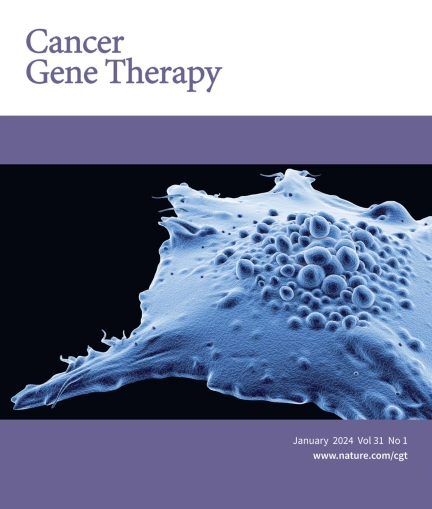The splicing factor SF3B1 confers ferroptosis resistance and promotes lung adenocarcinoma progression via upregulation of SLC7A11
IF 4.8
3区 医学
Q1 BIOTECHNOLOGY & APPLIED MICROBIOLOGY
引用次数: 0
Abstract
This study aimed to investigate the expression of SF3B1 in non-small cell lung cancer, and its clinical significance, biological function, and molecular mechanisms. SF3B1 mRNA and protein levels were elevated in both lung squamous cell carcinoma and lung adenocarcinoma (LUAD) tissues based on TCGA data and immunohistochemistry. Notably, high SF3B1 expression in LUAD was significantly associated with increased lymph node metastasis. Functional experiments involving SF3B1 knockdown and overexpression demonstrated that SF3B1 facilitated the proliferation, invasion, and migration of LUAD cells. Additionally, the SF3B1 inhibitor pladienolide-B attenuated the aggressive behavior of LUAD cells both in vitro and in vivo. RNA sequencing analysis indicated that differentially expressed genes in the SF3B1 knockdown and SF3B1 inhibitor groups were enriched in ferroptosis-related pathways compared to their respective control groups. The antiferroptotic role of SF3B1 in LUAD cells was validated by detecting glutathione depletion, lipid peroxidation, and observing morphological changes using transmission electron microscopy. This process was confirmed to be independent of apoptosis and autophagy, as evidenced by the effects of the ferroptosis inducer erastin, the apoptosis inhibitor Z-VAD-FMK, and the autophagy inhibitor 3-methyladenine. Rescue experiments indicated that the antiferroptotic role of SF3B1 in LUAD is partially mediated by upregulating the expression of SLC7A11.


剪接因子SF3B1通过上调SLC7A11赋予铁变态反应抗性并促进肺腺癌的进展。
本研究旨在探讨 SF3B1 在非小细胞肺癌中的表达及其临床意义、生物学功能和分子机制。根据TCGA数据和免疫组化结果,SF3B1 mRNA和蛋白水平在肺鳞癌和肺腺癌(LUAD)组织中均有升高。值得注意的是,SF3B1在LUAD中的高表达与淋巴结转移的增加显著相关。SF3B1敲除和过表达的功能实验表明,SF3B1能促进LUAD细胞的增殖、侵袭和迁移。此外,SF3B1抑制剂pladienolide-B可减轻LUAD细胞在体外和体内的侵袭行为。RNA测序分析表明,与各自的对照组相比,SF3B1敲除组和SF3B1抑制剂组的差异表达基因富集于铁突变相关通路。通过检测谷胱甘肽耗竭、脂质过氧化以及使用透射电子显微镜观察形态学变化,验证了 SF3B1 在 LUAD 细胞中的抗铁锈色素沉着作用。铁凋亡诱导剂麦拉宁、凋亡抑制剂 Z-VAD-FMK 和自噬抑制剂 3-甲基腺嘌呤的作用证明,这一过程与细胞凋亡和自噬无关。拯救实验表明,SF3B1在LUAD中的抗铁细胞凋亡作用部分是通过上调SLC7A11的表达来介导的。
本文章由计算机程序翻译,如有差异,请以英文原文为准。
求助全文
约1分钟内获得全文
求助全文
来源期刊

Cancer gene therapy
医学-生物工程与应用微生物
CiteScore
10.20
自引率
0.00%
发文量
150
审稿时长
4-8 weeks
期刊介绍:
Cancer Gene Therapy is the essential gene and cellular therapy resource for cancer researchers and clinicians, keeping readers up to date with the latest developments in gene and cellular therapies for cancer. The journal publishes original laboratory and clinical research papers, case reports and review articles. Publication topics include RNAi approaches, drug resistance, hematopoietic progenitor cell gene transfer, cancer stem cells, cellular therapies, homologous recombination, ribozyme technology, antisense technology, tumor immunotherapy and tumor suppressors, translational research, cancer therapy, gene delivery systems (viral and non-viral), anti-gene therapy (antisense, siRNA & ribozymes), apoptosis; mechanisms and therapies, vaccine development, immunology and immunotherapy, DNA synthesis and repair.
Cancer Gene Therapy publishes the results of laboratory investigations, preclinical studies, and clinical trials in the field of gene transfer/gene therapy and cellular therapies as applied to cancer research. Types of articles published include original research articles; case reports; brief communications; review articles in the main fields of drug resistance/sensitivity, gene therapy, cellular therapy, tumor suppressor and anti-oncogene therapy, cytokine/tumor immunotherapy, etc.; industry perspectives; and letters to the editor.
 求助内容:
求助内容: 应助结果提醒方式:
应助结果提醒方式:


